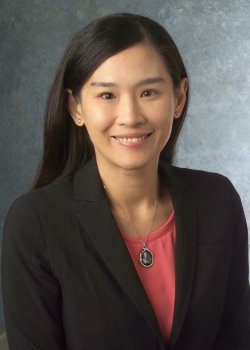
Safety through Science: A Partnership With Underwriters Laboratories
Think of all the products that have electricity running through them. The components of those products -- as well as the products themselves -- ordinarily meet scientific standards for fire safety, and undergo strict testing to be certified.
But sometimes technology gets ahead of standards.
J. Thomas Chapin, vice president of research for Underwriters Laboratories, uses the hoverboard as an example.
The Consumer Product Safety Commission in 2017 ordered a massive recall of the self-balancing scooters, after finding that lithium-ion batteries could overheat and cause fires.
“Standards are slow and commerce is fast,” said Dr. Chapin, who also is an adjunct professor at Case Western Reserve University. “The hoverboard was an uncertified product. About 560,000 units from 17 companies were recalled. The CPSC came to UL and said they wanted us to develop standards – in a hurry.”
Dr. Chapin joined UL in 2001 as general manager of the Fire Protection Division. The organization is a world leader in developing product safety standards, testing and certification.
Dr. Chapin helped create the Fire Science and Engineering master’s degree program, and he collaborates with assistant professor Ya-Ting T. Liao, head of the Computational Fire Dynamics Lab.
He said keeping pace with new products and technologies is a challenge. Industry, regulators and safety organizations rely on institutions such as Case Western Reserve for research and expertise.
The very creation of Underwriters Laboratories in 1894 occurred in response to new technology -- electricity and the development of electric products invented by Thomas A. Edison and others. Westinghouse and General Electric were new players in the budding industry.
After a large fire at the World’s Columbia Exposition, also known as the World’s Fair, in Chicago in 1893, the National Board of Insurance Underwriters realized the need for a fire and electrical testing laboratory. They asked William Henry Merrill Jr., an electrical engineer from MIT, to set up the lab. Merrill became the founder of UL.
“There was an urgent need for standards and testing because of new technology,” Dr. Chapin said.
“The world is constantly inventing new and unusual things. Inventors focus on normal or ‘foreseeable’ use, but often it is the unintended consequences of use that can lead to death, injury or property loss. Combined with ongoing research by world scientists, we have to expand our assessment from short-term hazards, in other words ‘acute’ injury, to include longer-term, chronic hazards. That is what we call the evolving definition of safety. We didn’t have lithium batteries, but 30 years ago the first ones were created, and now lithium batteries are everywhere.”
Dr. Chapin is a trained materials scientist. Prior to joining UL, he worked at AT&T Bell Laboratories for 21 years. He has dedicated his career to research in polymer science, material processing and degradation, product development, large-scale product manufacturing, product and systems failures, fire behavior and forensic studies.
UL evaluates more than 20,000 categories of products, and 22 billion UL marks appear on products every year.
“Our goal is to surround society in an envelope of safety where we live, work and play,” Dr. Chapin said.
“We take a vacuum cleaner, for instance. We evaluate it for safety, particularly for fire, shock and electrical hazards. In the process, we virtually and literally disassemble the product into its components.
“You have motors, wiring, plastic enclosures, various metallic and plastic elements. The envelope of safety is made up of evaluating all of the individual components as well. So a product being evaluated for standards is a sum of safe components.”
It all starts with quality standards developed on scientific engineering principles.
“In order for UL to stay on the leading edge, we need an intimate connection with fundamental experts who reside in universities, government laboratories and other institutions,” said Dr. Chapin. “It is that connection with experts that helps guide the process.”
Dr. Liao has taken up the challenge of creating an entire curriculum to help educate students about the important role of fire safety standards in trade, commerce and governance, he said.
“We’re peering over the horizon, seeing what’s next,” Dr. Chapin said. “The world will invent things faster than we can embrace them. We have to learn from the examples of unintended consequences, so we collaborate with experts to ponder these things. Who’s better at doing that than universities and national laboratories?
“This is an exciting time to learn and advance safety.”
